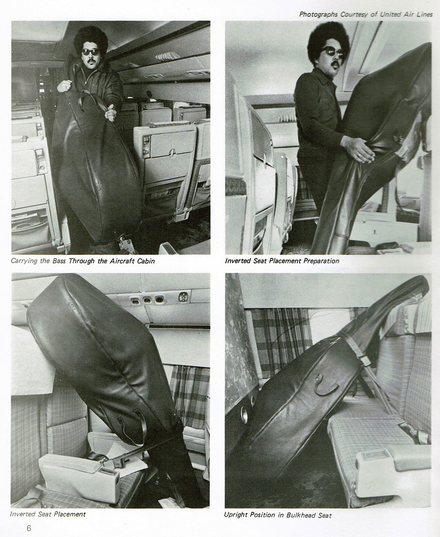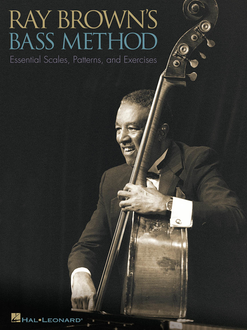Historic overview of Jazz double bass methods
As I mentioned before, Jazz double bass methods have a relatively short history. The earliest method I found was from 1962 called Jazz Bass Facing1 by Oscar Pettiford and Danish bass player Erik Moseholm. This book is fairly unknown but very interesting for beginner students. The exercises are musically interesting and the buildup is very decent.
|
In 1963, world renowned bass player Ray Brown published his method simply called Ray Brown’s Bass Method2. This book is in fact quite rudimental. It presents a few pictures of the right posture, many exercises in scales and intervals, some basic harmony, chord arpeggios and melodic patterns. It also contains some examples of blues lines and some exercises/etudes.
|
|
In 1974, Rufus Reid writes the first comprehensive bass method ‘The Evolving Bassist’ where he attempts to cover all important subjects. From posture to hand positions, scales, chords, theory etudes to even tips for transporting a bass in the plane. In 1998, Ron Carter writes his method Building Jazz Bass Lines. A systematic approach to building bass lines, using diagrams of chords to connect notes. It contains many examples of blues bass lines in different keys. |
In 2002, John Goldsby writes a method (The Jazz Bass Book) with a radically different approach. He focusses mainly on the historic development of the Jazz bass tradition. Describing key bassists throughout the Jazz history and analyzing their playing style. Only in the back of the book he talks about the technique of playing the bass and gives exercises and music theory. This book seems to focus more on advanced students.
In 2007, Hein van de Geyn published what is until now the most elaborate Jazz double bass method called ‘comprehensive bass method’. In this book van de Geyn attempts to cover all possible aspects. The first book is later followed by a part two with written-out exercises.
Some important Jazz double bass educators like John Clayton and John Patitucci decided not to create a bass method in the shape of a book. Each in their own way, they created a more modular approach using the possibilities of the internet. Since 2012 John Clayton started recording short YouTube videos about specific topics of playing the bass that accompany his regular teaching and masterclasses he gives worldwide.
John Patitucci, a world renowned player with a very busy schedule that doesn’t allow him to teach often, has created a very thorough online method at the website of artistsworks.com which was also launched in 2012. In hundreds of lessons for beginner, intermediate and advanced level he goes through all possible aspects of Jazz double bass teaching.
| In 2017 another world class bass player, Christian McBride recorded an online course. Although inspirational to hear him speak and play it doesn’t seem to be very well thought through. On the other hand, it gives a good insight in how he developed as a musician and will give intermediate and advanced students a lot think about. |
In my research I found quite a few more books and methods but mostly they are a repetition of what has been made before and seem to be made more for commercial reasons than for educational purposes. I included some in my Jazz Data Bass but I don’t consider them interesting to this research.
Table of contents:
- Historical perspective on Jazz bass education
- Topics of Jazz double bass education
- Historic overview of Jazz double bass methods
- Jazz Bass with John Patitucci
- New method of rhythmic improvisation for the Jazz bassist

